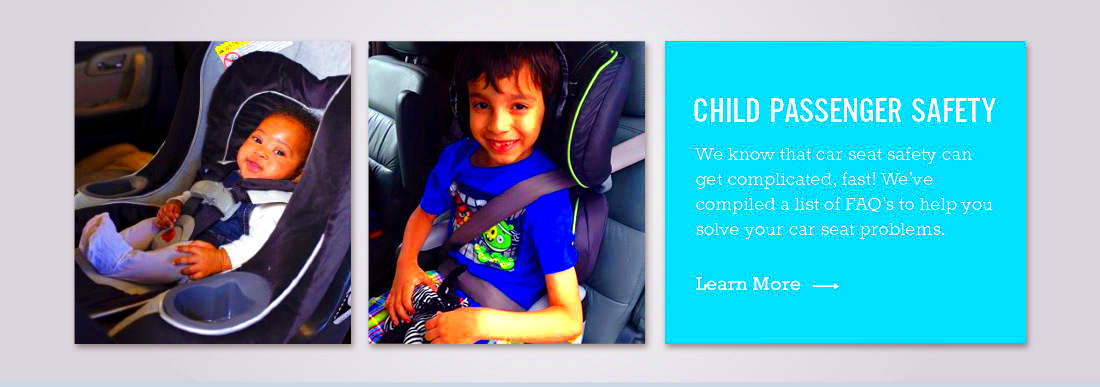Connecticut’s Child Passenger Safety Law Enforcement
Connecticut takes child passenger safety seriously, with laws designed to protect young children while traveling. These laws ensure that children are placed in age-appropriate and size-appropriate car seats to minimize injury during accidents. Whether you’re a parent, guardian, or caregiver, it’s crucial to understand and comply with these laws to avoid penalties and, more importantly, to keep your child safe.
The laws also reflect the latest safety standards, and being familiar with them helps drivers act responsibly when transporting children. Knowing the requirements will not only keep you compliant but can save lives.
Key Requirements for Child Passenger Safety in Connecticut

Connecticut’s child passenger safety laws outline specific requirements based on a child’s age, weight, and height. Here’s a breakdown of the key requirements:
- Children under 2 years old or under 30 pounds must ride in a rear-facing car seat.
- Children ages 2 to 5 years old and weighing between 30 to 40 pounds should be in a forward-facing car seat.
- Children between 5 and 7 years old and weighing between 40 to 60 pounds must use a booster seat with a seat belt.
- Children 8 years old and up to 16 must wear a seatbelt regardless of their seating position in the vehicle.
It’s important to check your child’s weight and height frequently to ensure they are always in the right seat. Remember that failure to follow these rules can result in fines and could increase the risk of serious injury in case of an accident.
Why These Laws Are Important for Child Safety
These laws are in place to protect children, who are more vulnerable in accidents due to their smaller size and physical development. Car seats, booster seats, and seat belts significantly reduce the risk of injury and death in a collision. For instance, a properly used car seat can reduce the risk of fatal injury by 71% for infants and by 54% for toddlers.
By ensuring children are secured properly, these laws prevent many of the worst outcomes in accidents, including serious head, neck, and spinal injuries. Parents should view these laws not just as legal requirements but as essential steps in keeping their kids safe every time they are on the road.
In addition to safety, adhering to these laws helps set a good example for children, teaching them the importance of car safety as they grow older.
Penalties for Violating Child Passenger Safety Laws
Connecticut imposes strict penalties for violations of child passenger safety laws. These penalties are in place to ensure that children are properly secured while riding in a vehicle, reducing the risk of injury or death. Failing to comply with these laws can lead to both financial penalties and points on your driving record.
Here are the penalties for violations:
- First offense: A fine of up to $199.
- Subsequent offenses: Fines of up to $250.
- Points may be added to your driving record, which can lead to higher insurance premiums.
It’s worth noting that law enforcement officers may issue tickets immediately if they observe any violations related to child passenger safety. Moreover, parents or caregivers who repeatedly violate these laws may face even more severe consequences, such as mandatory parenting classes.
Aside from fines, not following child passenger safety laws can have far more significant consequences. In the event of an accident, failing to secure your child properly could lead to serious injury or even death. Ensuring your child is in the correct car seat or using the appropriate safety restraint not only avoids penalties but also safeguards your family’s well-being.
How Law Enforcement Ensures Compliance
Connecticut law enforcement officers play a crucial role in ensuring compliance with child passenger safety laws. Officers conduct routine traffic stops and patrols to check that children are being properly restrained according to the legal requirements. If they observe a violation, they can issue a citation on the spot.
Additionally, law enforcement agencies often collaborate with community organizations to hold safety checkpoints and car seat inspection events. These checkpoints allow officers to educate drivers and caregivers about proper car seat installation and use, ensuring children are traveling safely.
Officers also receive special training on child passenger safety to recognize violations quickly and enforce the law effectively. Beyond traffic stops, law enforcement often runs public awareness campaigns, emphasizing the importance of following these safety regulations. By actively patrolling and conducting educational initiatives, law enforcement helps reduce the number of unrestrained children on the road.
In summary, enforcement is not just about issuing fines; it’s about promoting awareness and safety. Law enforcement officers work to create a safer driving environment for everyone, especially the youngest passengers.
Exceptions to Connecticut’s Child Passenger Safety Law
While Connecticut’s child passenger safety laws are designed to protect children, there are a few exceptions where certain regulations may not apply. These exceptions are rare and typically involve specific circumstances where compliance might not be feasible or necessary.
Here are some of the key exceptions:
- Medical exemptions: Children with certain medical conditions may be exempt from using standard car seats or restraints. A doctor’s note is required to verify this exemption.
- Emergency situations: In the event of a medical emergency, a child may be transported without a car seat if it’s necessary for immediate care.
- Commercial vehicles: Children riding in taxis, buses, or similar commercial vehicles may not be required to use a car seat, although it’s still highly recommended for safety.
It’s important to remember that while these exceptions exist, the vast majority of children will need to follow the standard safety regulations. Even in exempt situations, it’s always best to use proper safety restraints whenever possible to minimize risk during travel.
If you think you might qualify for an exemption, it’s essential to verify your eligibility with local authorities or a medical professional. Misinterpreting these exceptions can still lead to penalties if you’re found to be in violation of the law without proper justification.
Common Misconceptions About Child Passenger Safety
When it comes to child passenger safety, there are several misconceptions that can put children at risk. Many parents and caregivers may think they’re following the law and keeping their children safe, but misunderstanding the regulations can lead to mistakes. Let’s clear up some common misconceptions.
- “My child is tall enough, so they don’t need a booster seat.” Height alone is not the only factor. Connecticut law considers both height and age, and children typically need booster seats until they are 7 years old or weigh 60 pounds.
- “It’s fine to move my child to a forward-facing seat early.” Many parents want to switch to a forward-facing seat before the child reaches 2 years old, but it’s much safer to keep them rear-facing as long as they are within the seat’s weight and height limits.
- “Short trips don’t require a car seat.” Even if you’re driving just around the corner, children should always be in a proper car seat. Most accidents happen close to home.
- “Used car seats are okay.” While it might seem cost-effective, secondhand car seats may have been involved in accidents or could be expired. It’s always better to purchase a new, approved car seat.
Understanding these misconceptions helps ensure that children are properly secured every time they’re in a vehicle, reducing the risk of injury.
FAQs on Connecticut’s Child Passenger Safety Law
1. When can I switch my child to a forward-facing car seat?
You can switch to a forward-facing car seat when your child is at least 2 years old and weighs at least 30 pounds. However, keeping them rear-facing for as long as possible is recommended.
2. Do booster seats have to be used in the back seat?
Yes, children using booster seats should always sit in the back seat for maximum safety until they are at least 13 years old.
3. What happens if I don’t follow the child passenger safety laws?
You may face fines and points on your driving record. More importantly, non-compliance increases the risk of injury to your child in an accident.
4. Can I be pulled over just for a child passenger safety violation?
Yes, law enforcement can pull you over if they observe that a child is not properly restrained in accordance with the law.
5. Are there resources for helping me install a car seat?
Yes, local law enforcement and community programs often offer car seat inspection events where you can get help with installation.
Conclusion on the Importance of Following Child Passenger Safety Laws
Following Connecticut’s child passenger safety laws is about much more than avoiding fines; it’s about protecting the most vulnerable passengers—your children. Properly securing your child according to their age, weight, and height can significantly reduce the risk of injury or death in the event of a crash.
Understanding and complying with these laws is one of the most important responsibilities of any parent or caregiver. Taking the time to ensure that your child is safe in the vehicle is a small effort compared to the potential consequences of neglecting these regulations. In the end, it’s all about ensuring your child’s safety and giving you peace of mind every time you hit the road.


